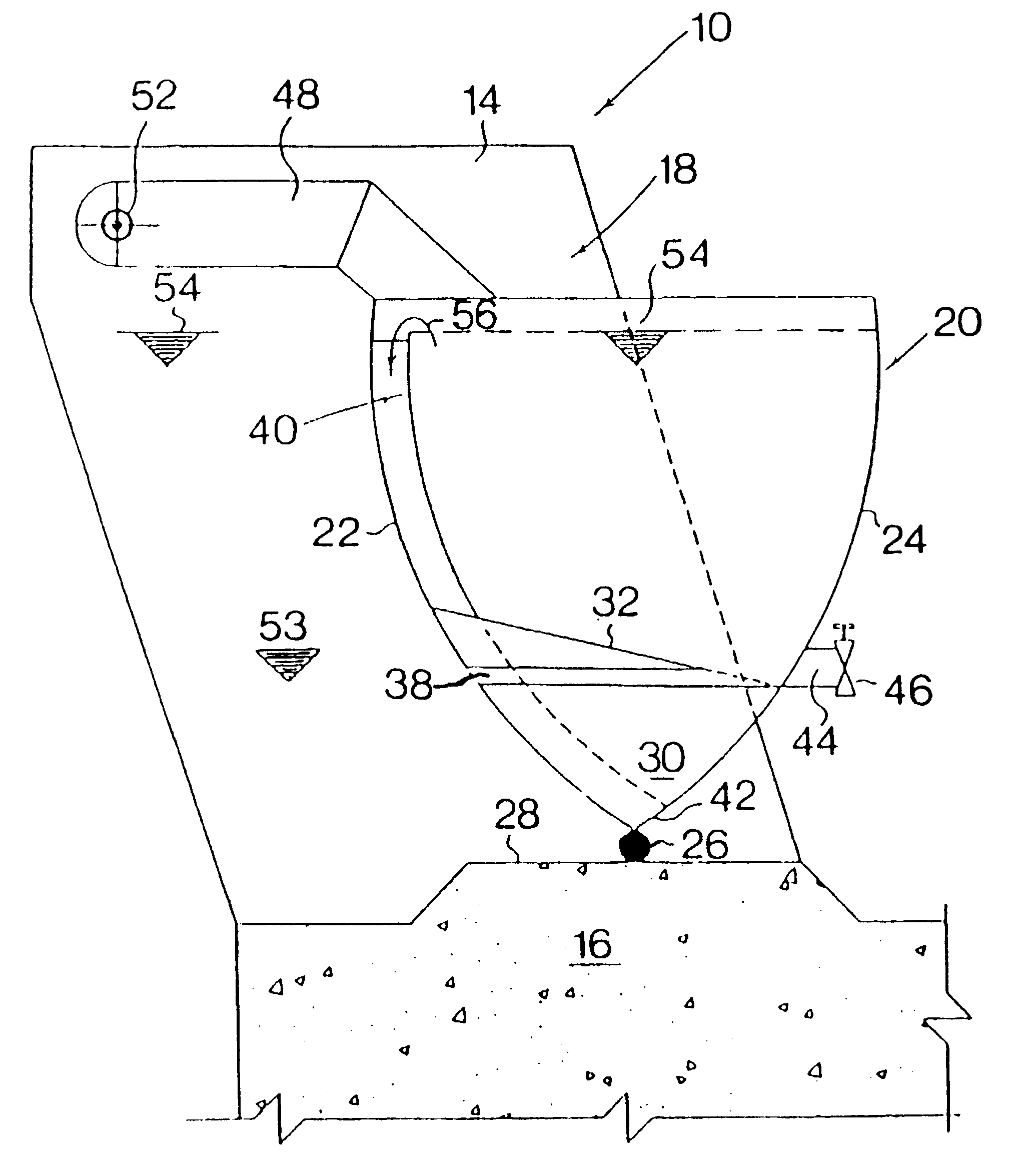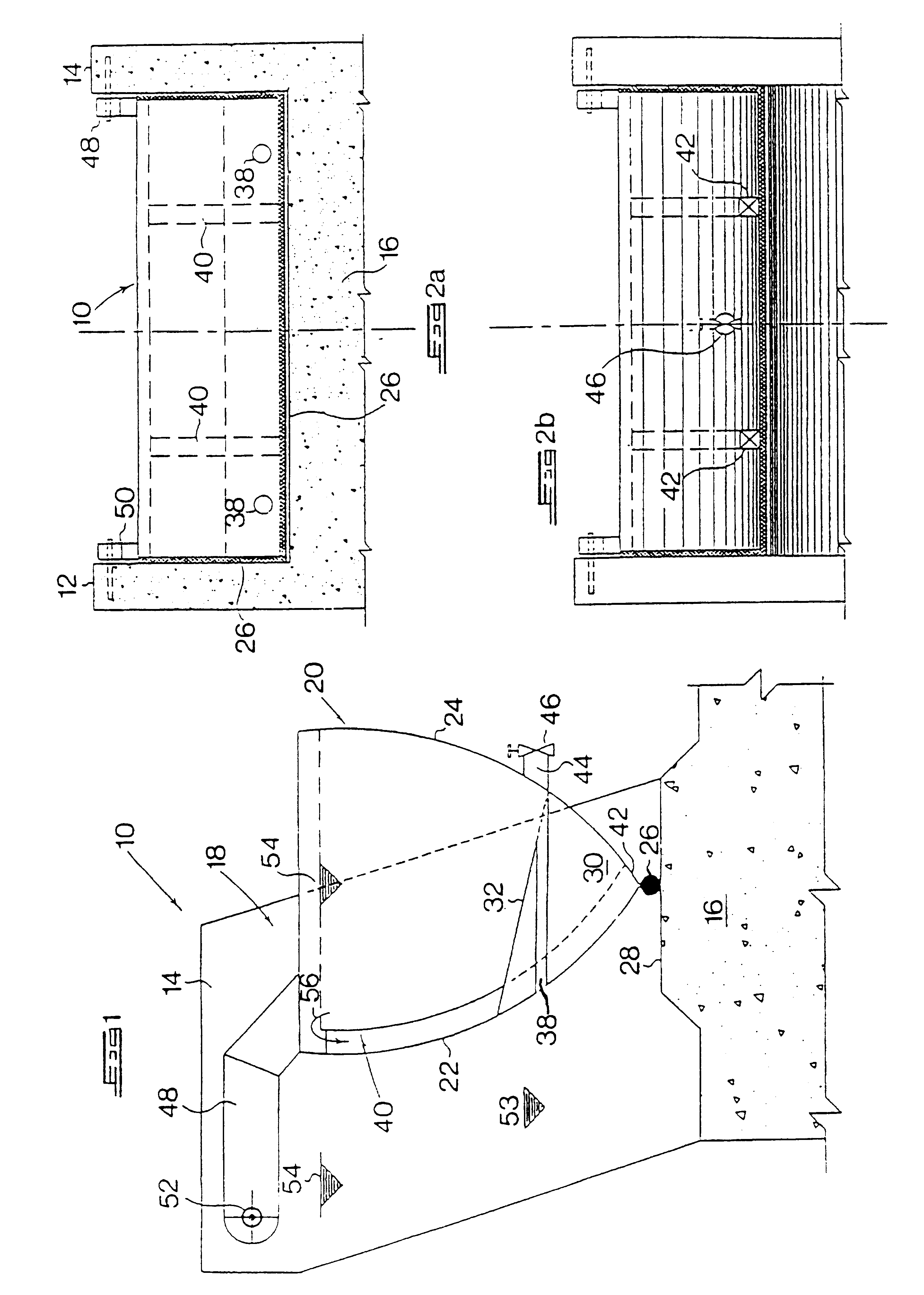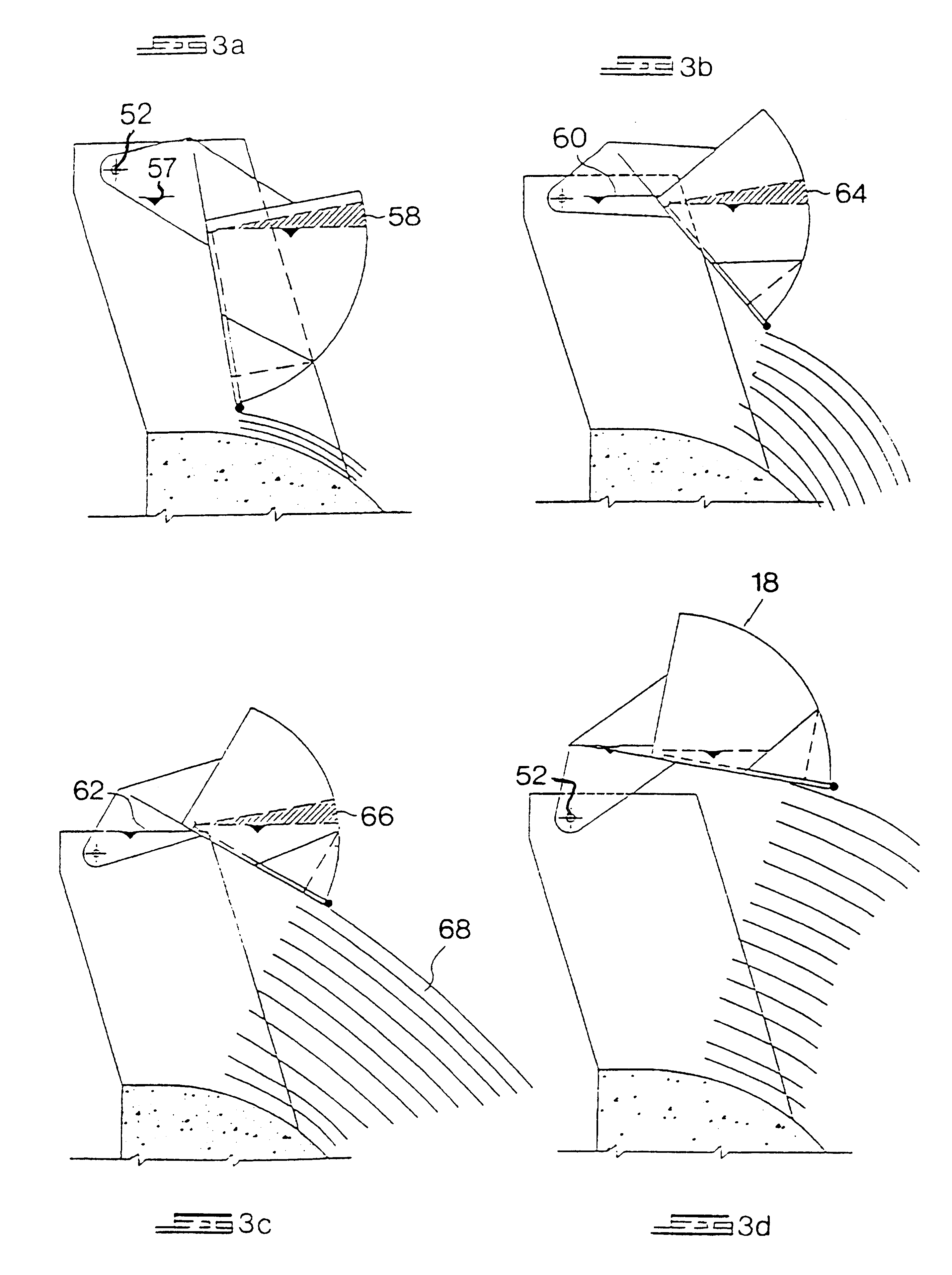Water control gate
a technology of water control gate and gate body, which is applied in the direction of coastline protection, marine site engineering, hydroelectric engineering, etc., can solve the problems of prone to failure of more sophisticated gates which are hydraulically or mechanically operated, add significantly to their operating costs, and many water control gates only tend to operate effectively
- Summary
- Abstract
- Description
- Claims
- Application Information
AI Technical Summary
Benefits of technology
Problems solved by technology
Method used
Image
Examples
first embodiment
Referring first to FIGS. 1 to 2B, a water control gate assembly 10 comprises a pair of piers 12 and 14 which extend upwardly from an outlet structure such as a dam spillway 16. A top-hung gate 18 includes a ballast tank 20 formed with opposed convex upstream and downstream walls 22 and 24. An elongate seal element 26 is fitted to the base and sides of the gate at the confluence of the walls, and is arranged to provide a seal between the gate and the top surface 28 of the spillway 16, as well as against the sides of the piers 12 and 14. The top-hung gate includes a lower void portion or buoyancy tank 30 which is separated from the ballast tank by means of a dividing wall 32 which slopes downwardly from the upstream wall 22 to the downstream wall 24 at an angle of depression of approximately 45.degree.. The ballast tank 20 is formed with a pair of spaced apart upstream water inlet pipes 38 and a pair of outlet launders 40 which extend from near the top of the upstream wall 22 to an ou...
second embodiment
Referring now to FIG. 4, a top-hung gate in the form of a spillway crest gate 72 is shown. The object of such a gate is to retain a body of water at a required full supply level above a fixed spillway or outlet structure in a dam or weir, thereby increasing the storage capacity thereof.
A one-way flap valve 73 is located at the outlet of the inlet opening 38 at the point where the inlet opening vents into the ballast tank 20. The flap valve 73 is arranged to pivot upwardly to a position indicated in broken outline at 73A on the ingress of water via the inlet opening 38, and is similarly arranged to close in the event of water flowing in the opposite direction from the ballast tank 20. In the event of wave action acting against the downstream wall 22 of the gate, the flap valve 73 will tend to open as the crest of the wave reaches the gate in response to the high hydrostatic forces acting on it, thereby causing water to flow into the ballast tank. However, as the trough of the wave mo...
fifth embodiment
Referring now to FIGS. 14A and 14B, a top-hung gate in the form of a tidal control gate 240 is shown. This gate is designed to allow inland water to flow out to sea when the sea level is below the inland water level, and to close off the gate to prevent tidal sea water from flowing inland when the sea level is at a predetermined level above the inland water level. In FIG. 14A. the inland water level 242 is higher than the water level 244 on the seaward side, thereby causing water to decant through the outlet launder 230 and allowing inland water to flow out to sea.
In FIG. 14B, the sea water level 246 is higher than the inland water level 248. A seal in the form of a flexible plate 250 extends from the base of the gate. This plate serves as a reaction plate which causes a downward drag on the gate as water flows from the seaward side of the gate. The plate 250 also serves as a guide to guide water back up the outlet launder 230 into the ballast tank 252 in the direction of arrow 254....
PUM
 Login to View More
Login to View More Abstract
Description
Claims
Application Information
 Login to View More
Login to View More - R&D
- Intellectual Property
- Life Sciences
- Materials
- Tech Scout
- Unparalleled Data Quality
- Higher Quality Content
- 60% Fewer Hallucinations
Browse by: Latest US Patents, China's latest patents, Technical Efficacy Thesaurus, Application Domain, Technology Topic, Popular Technical Reports.
© 2025 PatSnap. All rights reserved.Legal|Privacy policy|Modern Slavery Act Transparency Statement|Sitemap|About US| Contact US: help@patsnap.com



